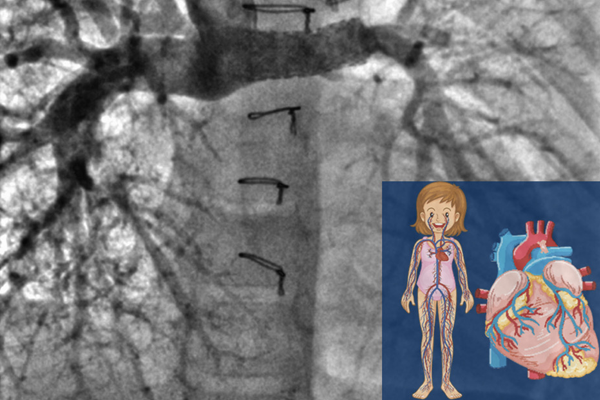Pediatric Cardiac Catheterization

Pediatric Cardiac Catheterization
Cardiac catheterization is an invasive procedure of accessing the heart and major great arteries by passing catheters from various peripheral vessels. In the previous era the main purpose of cardiac catheterization was diagnostic angiography and imaging. In the present era it is used for both diagnostic and various types of interventional procedures in children.
The most commonly used access for cardiac catheterization in pediatric age group are the femoral or groin vessels. However neck and axillary vessels are also used in certain scenarios. The procedure is mostly done under general anesthesia while local anesthesia may be sufficient in an adolescent or adult patient with congenital heart disease. Due to the small size of the heart and the related blood vessels high level of expertise and precision is needed for performing a successful pediatric catheterization procedure. Fluoroscopic image acquisition entails radiation exposure to all patients undergoing catheterization. However an experienced operator limits the radiation dosage to minimum by various techniques and maneuvers.
Some common intervention procedures routinely performed in children are device closure of atrial and ventricular septal defects, patent ductus arteriosus closure as well as aortic and pulmonary valvuloplasties. Hemodynamic study is yet another regular procedure in the pediatric catheterization laboratory. Neonatal interventional procedures like ductal stenting or ductal closure in preemies are also being performed on a regular basis. Sometimes adults may also undergo procedures like septal defect occlusion or trans-catheter pulmonary valve replacement etc. Thus adults with congenital structural defects are also mostly dealt in the pediatric catheterization laboratory.
Copyright© Draritrapedcardio. All right reserved.
